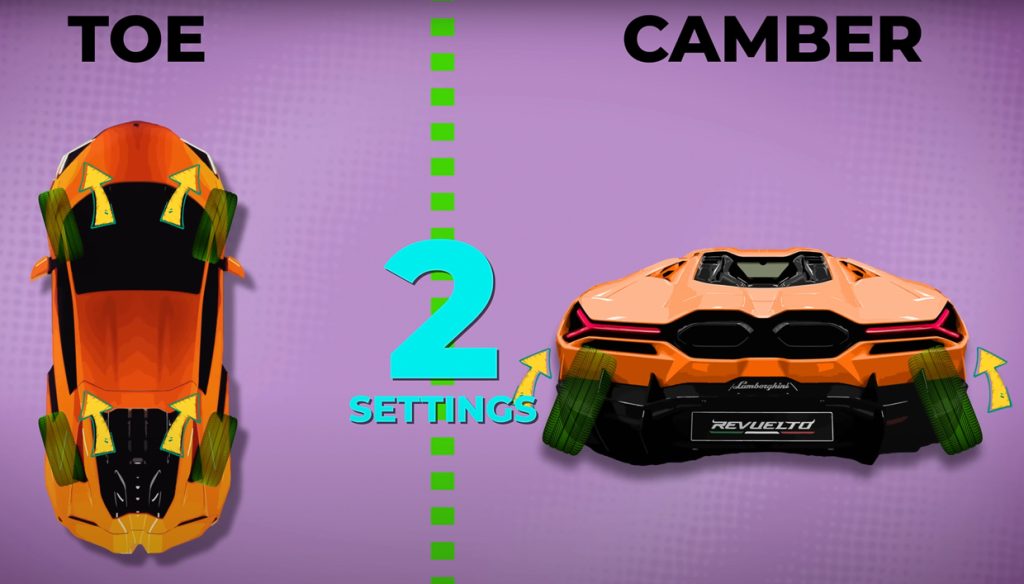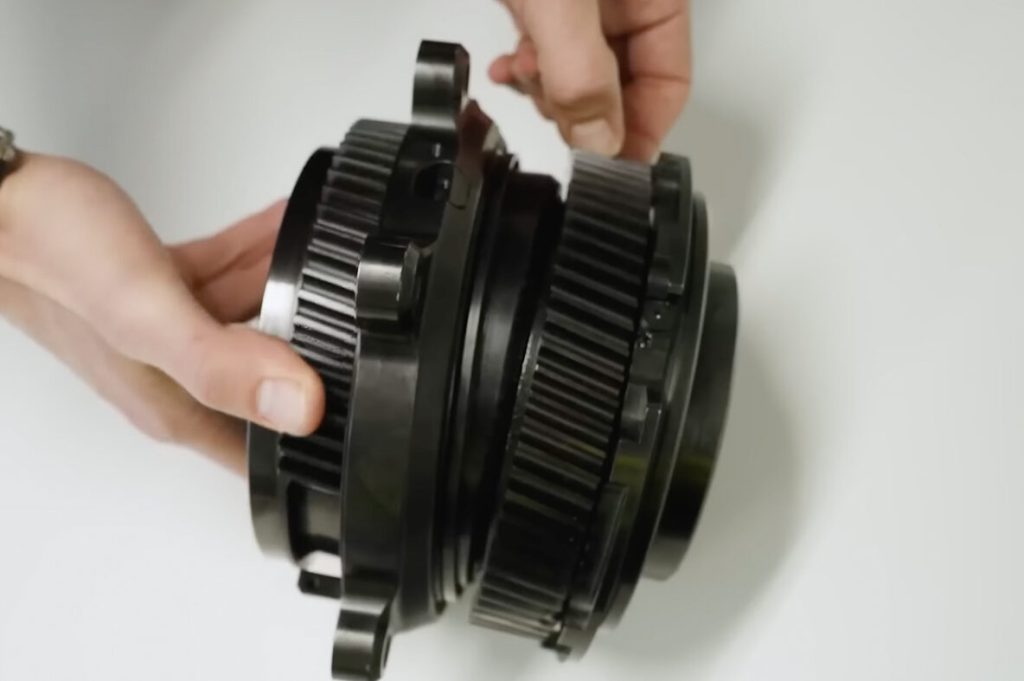Despite nearly two decades of amateur racing under my belt, setting up a race car’s suspension remains something of a dark art to me. Getting all the variables on my MX-5 or even the much more limited ones on my kart just right for a given track usually requires describing to a knowledgeable pro what the vehicle’s doing and making incremental changes based on their advice. With the ability to adjust toe, camber, caster, and wedge, it is far too easy to take a chassis in the wrong direction while hunting for a setup that behaves predictably. Finding that perfect combination will yield a better-behaving car at speed and ultimately produce better lap times.
Knowing the complications that come with making chassis adjustments, I was quite intrigued when Lamborghini recently unveiled its Active Wheel Carrier, or AWC, for short. It might have nothing to do with karting or club racing Mazdas, but this tech actively adjusts two aspects of rear suspension geometry up to 60 times per second, shaving massive chunks of time from the pace of pros and novices alike. Let’s look at how it works and what it can do for you.

Toe, or the angle of the wheels relative to a straight line running from the front of the car to the back, is the first axis of adjustment. Zero toe is when the wheels are pointed perfectly straight – this positioning makes for the least rolling resistance (and therefore the least amount of tyre wear). However, for spirited driving, even tiny changes in toe angle can make a world of difference. Small increments of toe out – where the leading edge of the tyres is slightly further apart than the trailing edge – can make the car more eager to change direction (some drivers call this “twitchy”), while toe in, especially at the rear of the car, can help induce stability. AWC’s variable toe enables razor-sharp turn-in and confidence-inspiring stability throughout the corner. It’s also able to use this adjustable toe mechanism to induce minute amounts of rear-wheel steering to help the car feel more nimble, as well.

The second axis that Lambo’s AWC can alter is camber, which is the extent to which the top of the wheel is leaning in (negative camber) or out (positive) relative to horizontal. Optimal camber, like toe, is dependent on what a car’s doing at any given moment. For applying power down a straight, zero camber maximises the tyre’s contact patch. In a corner, negative camber on the outside wheel compensates for the vehicle’s lean and enables ideal grip on the side of the car that is loaded up with the most weight.
AWC’s active camber adjustment provides the optimal contact patch at all times. This is most important in cornering, where not only is the outside tyre ideally set up for the turn, the one on the inside – which in a traditional setup would have the smallest contact patch in this situation – is now able to employ the full width of the tyre and greatly increase mid-corner grip.

The AWC system monitors data from a number of sensors, including steering angle, throttle, and g-forces in order to add or subtract camber and toe independently at both rear corners. The outcome was dramatic – according to the OVERDRIVE YouTube channel, journalists testing the car improved their lap times by 4.8 seconds, and Lamborghini’s own test drivers saw a 2.8-second reduction in lap times when AWC was on.
Of course, there’s a great deal of load placed on wheel hubs, especially with the monster power and sticky tyre compounds found on today’s Lamborghinis. As a result, it may be some time before this tech reliably finds its way to the streets on supercars or otherwise. I think I’ll keep my racing rides old school, but I am constantly amazed at the technology that makes speed ever more attainable.









